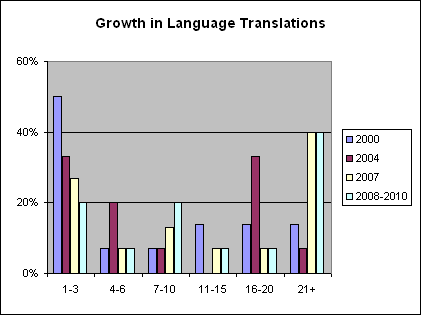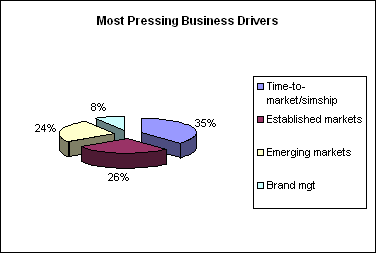The results to our poll on the Growth in Language Translations are in. Take a look:

A couple of data points jump right out:
- There is clearly a significant decline in those who are currently translating to only 1-3 languages when we look at plans for 2008/2010.
- In terms of changes from 2007 to 2008, the increase in language translations appears to be moving up from 3 languages maximum to 10 languages maximum. That’s more than doubling “translation capacity” over a relatively short period of time.
Adding to some of the stats in Mary’s blog on Emerging Markets: The Brass Ring?, economists agree that a revolution in the global economy is well underway. Donald Hepburn, corporate economist for Unilever, notes that “companies that do not understand the economics of developing nations will miss out,” and predicts a major shift in consumer consumption by 2010. The Economist concurs, noting that the shift is not just about China and India. And a Goldman Sachs study takes it a step further, predicting that by 2040, the world’s ten biggest economies will include Brazil, Russia, India and China, aka BRIC.
Begs the question, how are companies preparing for the increase in demand for translated content and localized user interfaces? Mary and I are on vacation next week, July 30 through August 4, but we’ll have more commentary when we return. Happy summer!

